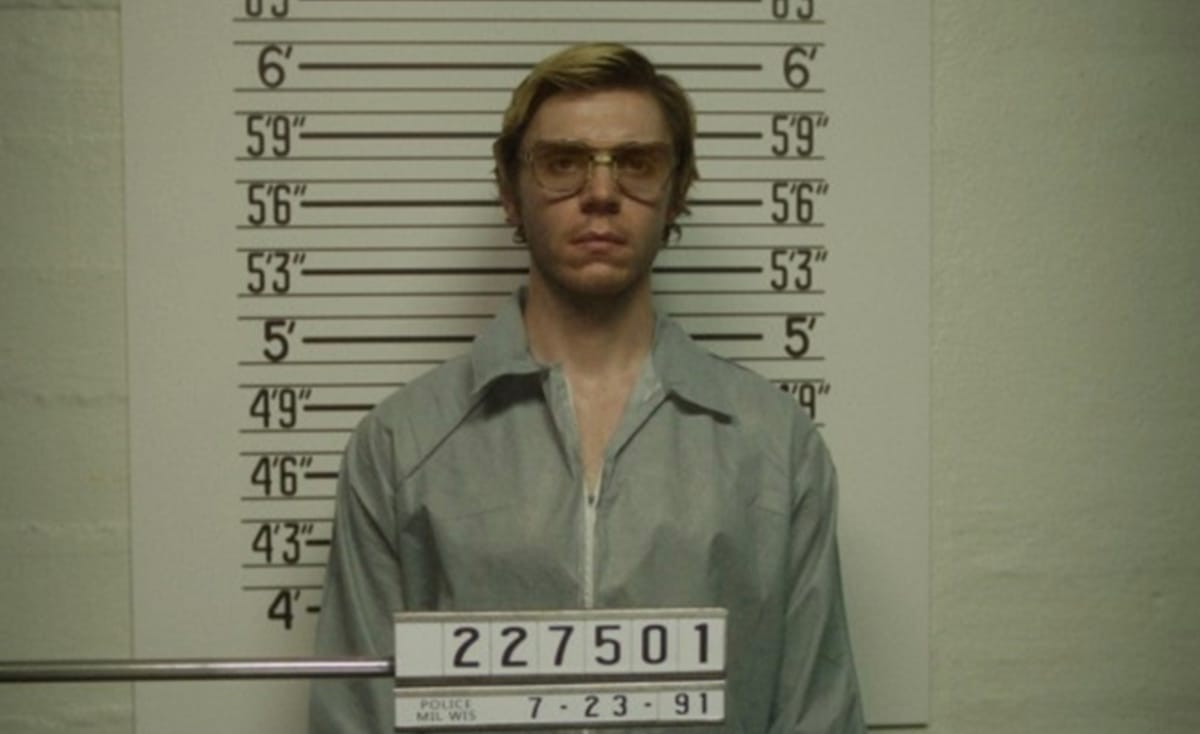A Mirror through which we Might See: A Review of Netflix’s “Dahmer”.

By Toby Oliver Clarke, BA History
“The viewer has their cravings for the depraved met, whilst feeling equally repulsed by the unnatural evil with which they are confronted”
Our ever-ravenous appetite for the taboo has left us in a world which is both lamentable and sadly predictable. A desire to feed the depravity within all of us has generated a whole new industry within the media – True Crime. It’s a genre of television which is akin to purgatory (the space which many believe lies between heaven and hell), the viewer has their cravings for the depraved met, whilst feeling equally repulsed by the unnatural evil with which they are confronted. In this regard, producers are pushing media which feeds these twin urges, often as divisive as they are entertaining, these shows are designed to fuel the clickbait culture in which we now live. One key tenet of these shows, is the infliction of violence upon bodies belonging to Queer and Black communities, in this regard, Ryan Murphy’s ‘Dahmer’ is no exception.
Accordingly, the series opens with Dahmer on the hunt for vulnerable men of colour, a scene which becomes uncomfortably familiar as the series progresses. Tracey Edwards (the only known survivor of Dahmer), is lured back to Dahmer’s apartment on the premise of partaking in a paid photoshoot. In the hours that follow, Edwards is spiked and bound by Dahmer, with the scene culminating in Edwards’s dramatic escape from the apartment. Whilst the scenes that play out are certainly those of terror, there’s a romanticism to them which attracts and repulses the viewer in equal measure. The low lighting, heavy breathing, and innate attractiveness of both actors creates a scene which is evidently aiming for arousal as much as it is horror. However, the feeling evoked by the scene is not one of arousal, nor one of horror, rather the scene leaves the viewer feeling distinctly uneasy. The contrast between Dahmer and Edwards is one key factor in the creation of this unease, Dahmer is presented as being both dogged in his determination, and uneasy in his sense of self, whilst Edwards come across as self-confident, sexually assured, and desirable – a prize which Dahmer must ultimately catch. This all amounts to an evil which is omnipresent throughout much of Murphy’s extensive body of work, the fetishization of Black bodies. Edwards is seen not so much as a victim of sexual violence, but as a wild animal in need of taming, with handcuffs, chemical bounding, and a chase through the night, the scene feels like the high point of a wildlife documentary, the dramatic climax of a chase between a lion and his prey.
Murphy does attempt to highlight the failings of those who allowed Dahmer to carry out his murderous spree. Episode one ends with the arrest of Dahmer, and the accompanying screams of Glenda Cleveland, a neighbour of Dahmer’s who had repeatedly reported him to the police and grew increasingly frustrated at the inertia of the local police department. The scene ends with Cleveland’s shouts of “You did nothing,” a timely reminder that both then and now, crimes committed upon marginalised communities are seen as second rate by police departments both home and abroad.
Similarly, episode two covers the kidnap and murder of James Doxtator, a 14-year-old sex worker of Native American descent. Like Edwards, Doxtator initially escapes the confines of Dahmer’s apartment, only to be met by two dubious and cynical police officers. Spiked, bleeding and unable to speak, it’s clear that the officers view Doxtator as being just another victim of a culture which had ravaged gay communities of colour throughout the 80s. A scrambling Dahmer manages to convince the officers that he and Doxtator were simply a pair of young lovers who had overestimated their own capacity to drink. Assured by the promises of an overbearing and manipulative Dahmer, the officers leave Doxtator to the mercy of his captor, a move which would ultimately result in his death. Whilst these two scenes do go some way to highlighting the treatment of Queer communities of colour by the police, it’s a move which feels hollow when viewed in the context of the whole series. Rather than acting as the focal point of the series, Murphy’s activism feels empty, the mandatory bone thrown to Hollywood’s superficially woke elite.
In spite of this criticism, the audience should look closer to home when searching for the feeling of unease that “Dahmer” generates. The anxiety which the audience experiences, is felt not out of a sense of remoteness or separation from the events portrayed in the series, but rather, a sense that the plot laid in Dahmer is one which hits a little too close to home. Increasingly our society feeds off of the infliction of violence on communities of colour, the tape of the George Floyd’s murder garnered over 100 million views online, and the assault of Chris Rock at this year’s Oscars was the most watched award ceremony clip of all time. This leaves the audience with an uneasy conclusion: Dahmer’s desire to fetishize Black bodies doesn’t so much lift up the carpet on the racialized violence, as much as it holds up a mirror to reveal the hidden Dahmer which lives in all of us.
Dahmer is now showing exclusively on Netflix.
Photo Caption: Evan Peters as Jeffrey Dahmer in “The Jeffrey Dahmer Story” (Photo credit: Netflix )



